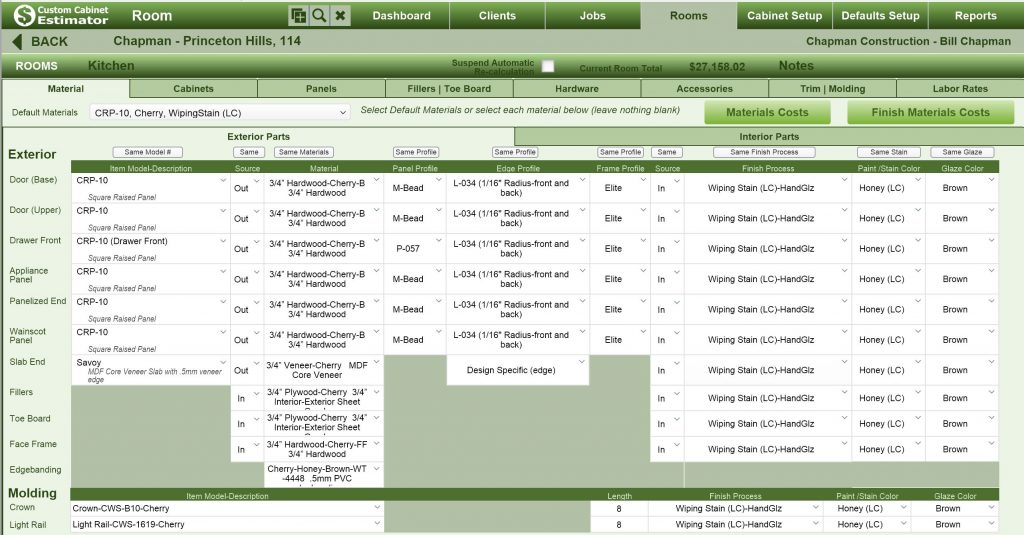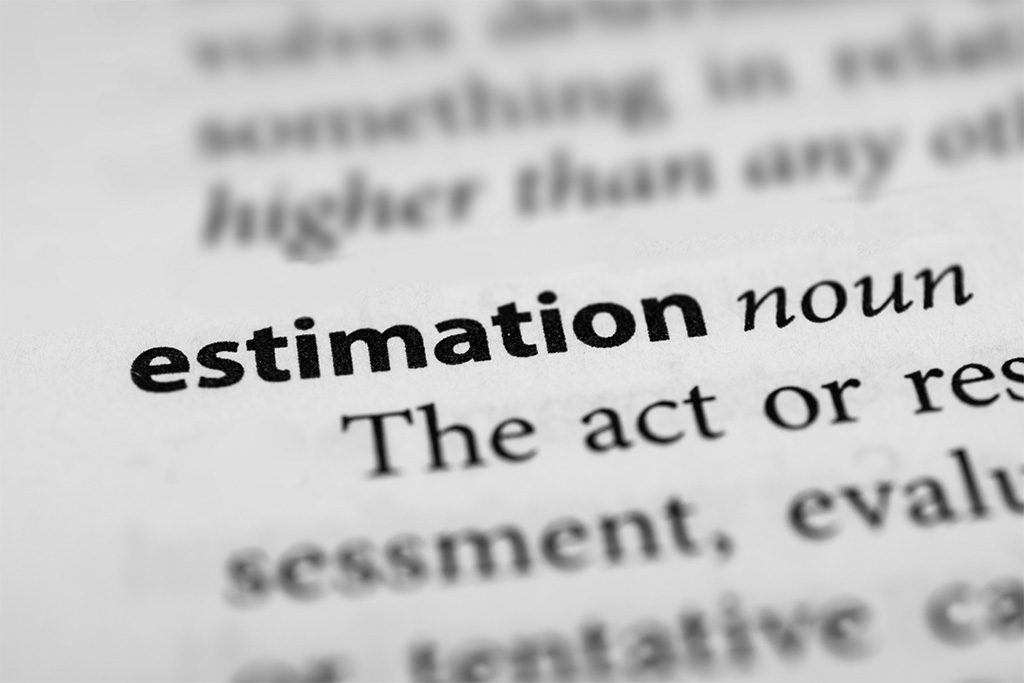Effective Estimating – Part 4 of 6
In the last Effective Estimating blog post, we talked about providing our prospective clients with multiple Ballpark Estimates in an attempt to separate the wheat from the chaff. Today we will look at doing something similar with our Formal Estimates to help us sell more projects.
In addition to having a 3 tiered pre-qualifying Ballpark cost method like I described in the last post of this series, we also need to provide our prospective customers with three Estimates. This is another reason to have a powerful estimating system that allows you to provide these additional Estimates and/or Proposals quickly and easily. In my case, I would look at the selections made for both my lowest cost per cabinet project and my most expensive cost per cabinet project from the past year, and create Default Material sets in my Custom Cabinet Estimator software to be used throughout the coming year so that I could create the 2 additional Estimates extraordinarily fast each time I do an Estimate. I would simply create the Estimate based on the customers selections, then duplicate that job in Custom Cabinet Estimator, and choose a new Default Material set by clicking one button, then make any additional adjustments like adding or removing accessories, trim, molding, etc., and rinse and repeat.
My personal experience with doing this was nothing but positive. By providing every client three Estimates, you win some projects simply because you have fulfilled their innate desire to get three prices (the three Estimate mantra is drilled into us throughout our lifetime, but no one ever said the three Estimates have to be from three different companies). Many people will be satisfied with your three Estimates and simply choose the one that fits their budget or desires.
Another common issue this three Estimate methodology solves is the client that does not know what their budget is, and just goes shopping for Estimates from multiple vendors. The early Estimate providers lose out in this process because they have provided an Estimate based on what the client asked for, but frequently the client cannot afford what they asked for. Each successive Estimate gets closer to what they can afford because each time they find a new vendor, they trim their selections to more realistic things they can afford. If you are one of the early Estimators, you lose, if you are the last guy, you win. When you provide this client an Estimate for your lowest possible selections, an Estimate for your typical selections and an Estimate for your best of the best selections, this client will more often than not either just go with the Estimate they can afford, or at least come back to review your low cost Estimate (I personally won a lot more jobs in that lower tier of selections after I started providing three Estimates to everyone).
And last, but certainly not least, by providing these three Estimates, some clients will upgrade to the better selection set. I found that I left a lot of money on the table for a whole lot of years by not doing this. Many of my clients upgraded just because they saw the value in the higher grade of door, drawer front, finish, etc., but never dreamed the difference would be within their reach.
Today we covered providing our prospective clients with multiple Formal Estimates to help us sell more projects. In our next article in this Effective Estimating series, we will look at the Accuracy of your Estimating System.
To make sure you won’t miss a crucial part of this discussion, enter your email address in the ‘Subscribe to Blog via Email’ field on the right, and each time one of us adds a blog post, you will automatically be notified. Oh, and you won’t hurt our feelings if, depending on where you are seeing this, you Share, Like, Plus or Re-tweet it (there are buttons somewhere on this page to help you with that).
May the Lord bless the work of your hands, heart and mind.
